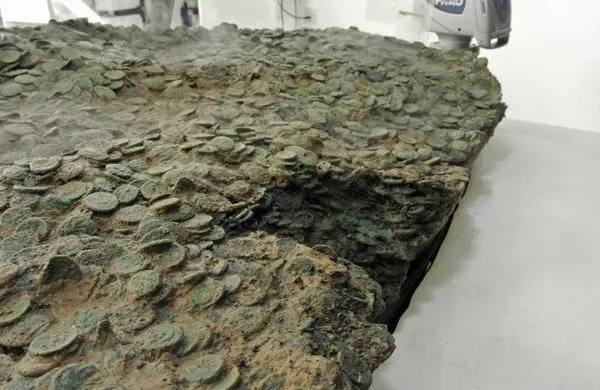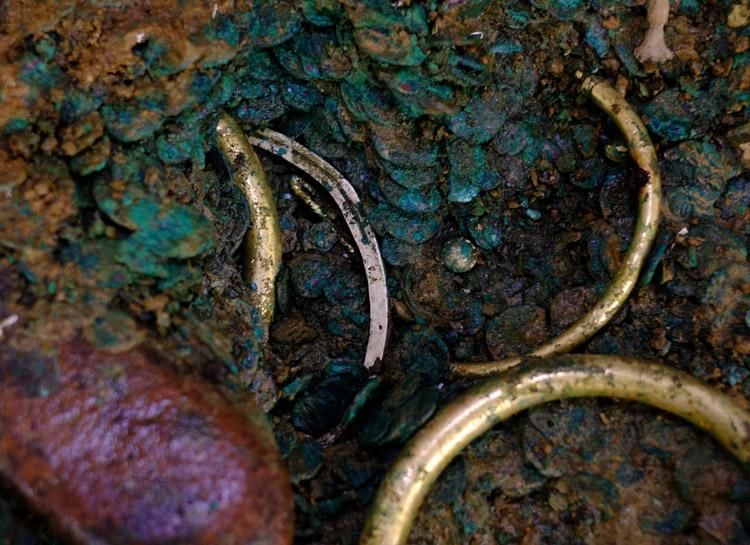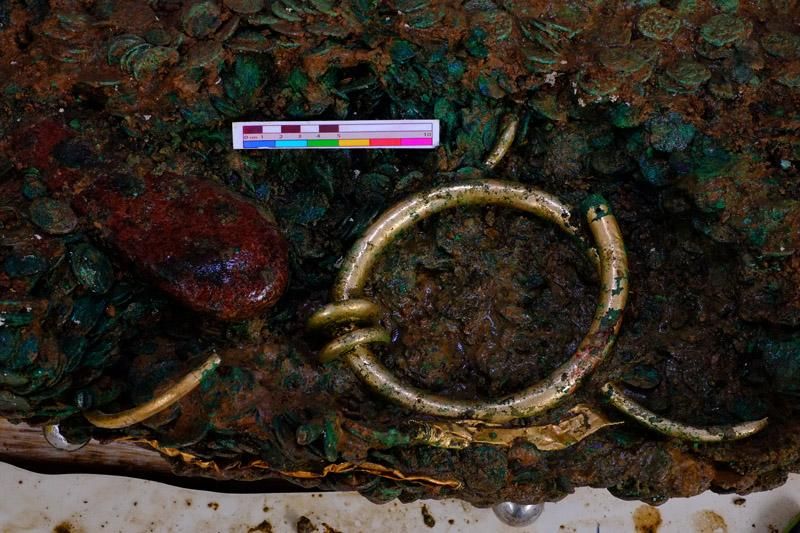Researchers Finish Separating World’s Largest Celtic Coin Hoard
It took nearly three years to separate the more than 68,000 coins
Last Friday, conservators at Jersey Heritage finally completed separating and meticulously cleaning the largest hoard of Celtic coins and gold jewelry ever discovered. It took nearly three years of effort to go through the mass of treasure.
“This is a significant milestone for the team. It has been painstaking but thoroughly intriguing work, which has delivered some very unexpected and amazing finds along the way,” Neil Mahrer, who led the conservation effort says in a press release. “There is still plenty to do and I am sure the Hoard will continue to surprise us as we clean and record the material.”
According to the BBC, the treasure was discovered in 2012 by amateur metal detector enthusiasts Reg Mead and Richard Miles. But it was no accidental discovery; the pair had been searching the area for 30 years looking for it. They began their quest after a local woman told them that her father had discovered some silver Celtic coins in a pot in a field near her home in Jersey, a British island in the English Channel. She did not recall the exact location, and the owner of the field only allowed the pair to search the area once a year after he harvested his crops.
Their patience paid off, and they did eventually find several coins in the field. “We then looked deeper into the ground to see if there was anything further. We came down on a solid object and when Reg dug up a chunk of earth there was immediately five or six discs,” Miles tells the BBC. “We always said if we found anything significant it must remain in situ, it had to remain in its archaeological context so it could be studied.”
The hoard, dubbed Catillon II contained, at last count, at least 68,000 coins, approximately six times larger than any other Celtic hoard ever discovered, according to Jersey Heritage. It also contained many gold neck torcs, glass beads, a leather purse and a bag with silver and gold decoration. Researchers estimate it was buried by French Celts known as the Coriosolitae around 30-50 B.C., around the time of Julius Caesar, likely as they fled a Roman invasion of the area.
According to the BBC, now that the contents of the hoard have been separated, the government of Jersey will vote on whether to pay to keep the treasure trove on the island or allow it to be sold off. At the time of its discovery, it was valued at 10 million pounds.




